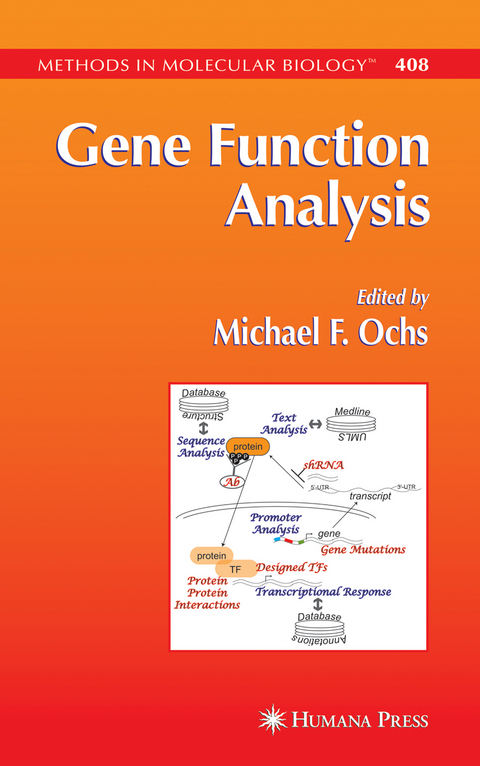
Gene Function Analysis
Humana Press Inc. (Verlag)
978-1-61737-748-8 (ISBN)
Computational Methods I.- Gene Function Inference From Gene Expression of Deletion Mutants.- Association Analysis for Large-Scale Gene Set Data.- Estimating Gene Function With Least Squares Nonnegative Matrix Factorization.- From Promoter Analysis to Transcriptional Regulatory Network Prediction Using PAINT.- Prediction of Intrinsic Disorder and Its Use in Functional Proteomics.- Computational Methods II.- Sybil: Methods and Software for Multiple Genome Comparison and Visualization.- Estimating Protein Function Using Protein-Protein Relationships.- Bioinformatics Tools for Modeling Transcription Factor Target Genes and Epigenetic Changes.- Mining Biomedical Data Using MetaMap Transfer (MMTx) and the Unified Medical Language System (UMLS).- Statistical Methods for Identifying Differentially Expressed Gene Combinations.- Experimental Methods.- Gene Function Analysis Using the Chicken B-Cell Line DT40.- Design and Application of a shRNA-Based Gene Replacement Retrovirus.- Construction of Simple and Efficient DNA Vector-Based Short Hairpin RNA Expression Systems for Specific Gene Silencing in Mammalian Cells.- Selection of Recombinant Antibodies From Antibody Gene Libraries.- A Bacterial/Yeast Merged Two-Hybrid System.- A Bacterial/Yeast Merged Two-Hybrid System.- Engineering Cys2His2 Zinc Finger Domains Using a Bacterial Cell-Based Two-Hybrid Selection System.
| Erscheint lt. Verlag | 19.11.2010 |
|---|---|
| Reihe/Serie | Methods in Molecular Biology ; 408 |
| Zusatzinfo | 73 Illustrations, black and white; XIV, 337 p. 73 illus. |
| Verlagsort | Totowa, NJ |
| Sprache | englisch |
| Maße | 152 x 229 mm |
| Themenwelt | Medizin / Pharmazie ► Medizinische Fachgebiete |
| Studium ► 2. Studienabschnitt (Klinik) ► Humangenetik | |
| Naturwissenschaften ► Biologie ► Biochemie | |
| Naturwissenschaften ► Biologie ► Genetik / Molekularbiologie | |
| Naturwissenschaften ► Biologie ► Zellbiologie | |
| Technik ► Umwelttechnik / Biotechnologie | |
| ISBN-10 | 1-61737-748-1 / 1617377481 |
| ISBN-13 | 978-1-61737-748-8 / 9781617377488 |
| Zustand | Neuware |
| Haben Sie eine Frage zum Produkt? |
aus dem Bereich


